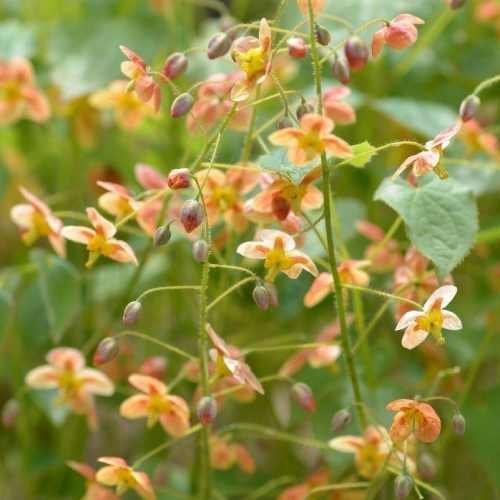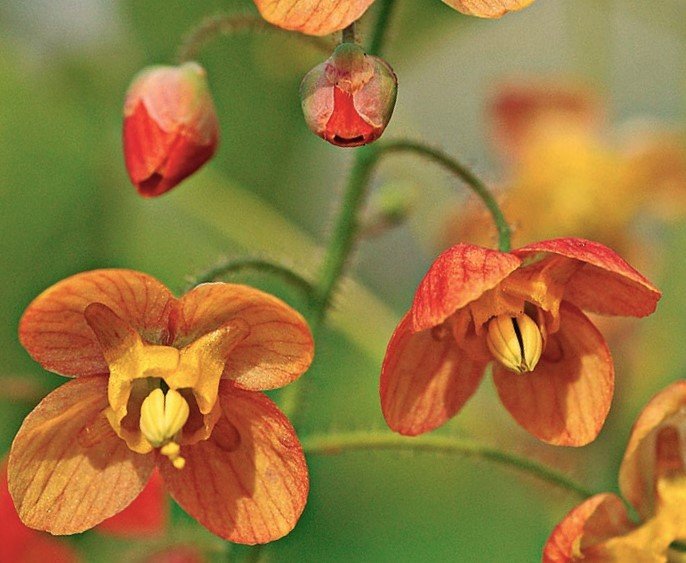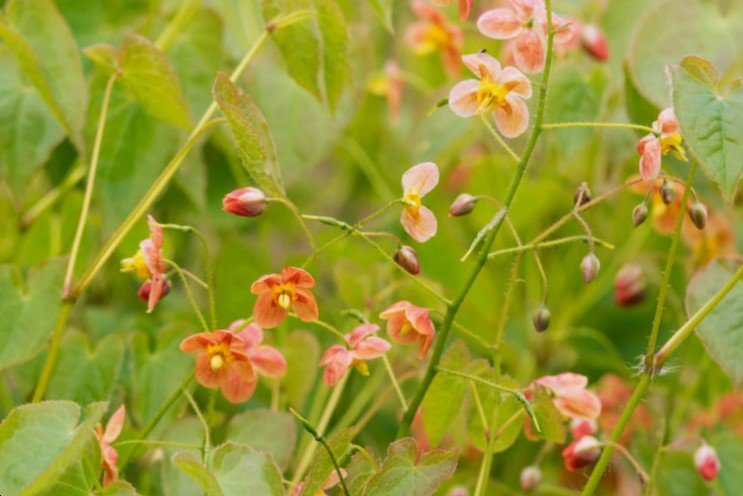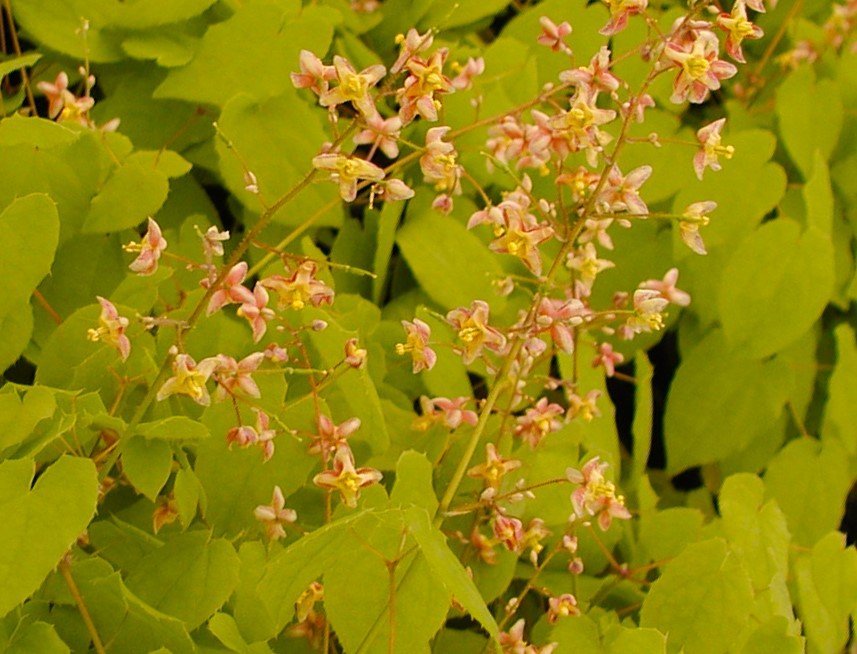 Image 1 of 5
Image 1 of 5

 Image 2 of 5
Image 2 of 5

 Image 3 of 5
Image 3 of 5

 Image 4 of 5
Image 4 of 5

 Image 5 of 5
Image 5 of 5






Epimedium x warleyense 'Orange Queen' (Orange Queen Epimedium)
Each spring, this evergreen perennial for shady spots in your landscape makes extremely dense clumps of heart-shaped green leaves brushed with red, and you can also expect some bronze and red fall color in the leaves. This hard-to-find variety, "Orange Queen," features striking flowers are a combination of orange, red, yellow, apricot, and bronze on 8-12 in. stems that float above the 10-12 in. high by 12-16 in. wide mound of leaves. The blooms are not only beautiful, but also provide habitat for many pollinators. The dense foliage provides habitat for many smaller organisms that support a healthy landscape.
Epimediums prefer some regular water to establish, but when mature, will be completely drought-tolerant and fuss free, including deer and rabbit resistant. Epimediums are one of the few plants that thrive in dry shade, such as under conifers. In order to enjoy their soft new leaves, cut back old Epimedium leaves in late winter or early spring.
As with all Epimedium, this variety can grow under trees where many other plants struggle to survive. Epimedium is effective as a groundcover or a featured specimen to highlight in your shady garden space. This water-wise wonder looks natural with native woodland species, such as its close relative, Vancouveria hexandra, along with Bleeding-heart, Star-flowered false Solomon"s-seal, and more. Along with evergreen Hellebores, these retain the structure of the shady perennial garden over winter.
Each spring, this evergreen perennial for shady spots in your landscape makes extremely dense clumps of heart-shaped green leaves brushed with red, and you can also expect some bronze and red fall color in the leaves. This hard-to-find variety, "Orange Queen," features striking flowers are a combination of orange, red, yellow, apricot, and bronze on 8-12 in. stems that float above the 10-12 in. high by 12-16 in. wide mound of leaves. The blooms are not only beautiful, but also provide habitat for many pollinators. The dense foliage provides habitat for many smaller organisms that support a healthy landscape.
Epimediums prefer some regular water to establish, but when mature, will be completely drought-tolerant and fuss free, including deer and rabbit resistant. Epimediums are one of the few plants that thrive in dry shade, such as under conifers. In order to enjoy their soft new leaves, cut back old Epimedium leaves in late winter or early spring.
As with all Epimedium, this variety can grow under trees where many other plants struggle to survive. Epimedium is effective as a groundcover or a featured specimen to highlight in your shady garden space. This water-wise wonder looks natural with native woodland species, such as its close relative, Vancouveria hexandra, along with Bleeding-heart, Star-flowered false Solomon"s-seal, and more. Along with evergreen Hellebores, these retain the structure of the shady perennial garden over winter.
Each spring, this evergreen perennial for shady spots in your landscape makes extremely dense clumps of heart-shaped green leaves brushed with red, and you can also expect some bronze and red fall color in the leaves. This hard-to-find variety, "Orange Queen," features striking flowers are a combination of orange, red, yellow, apricot, and bronze on 8-12 in. stems that float above the 10-12 in. high by 12-16 in. wide mound of leaves. The blooms are not only beautiful, but also provide habitat for many pollinators. The dense foliage provides habitat for many smaller organisms that support a healthy landscape.
Epimediums prefer some regular water to establish, but when mature, will be completely drought-tolerant and fuss free, including deer and rabbit resistant. Epimediums are one of the few plants that thrive in dry shade, such as under conifers. In order to enjoy their soft new leaves, cut back old Epimedium leaves in late winter or early spring.
As with all Epimedium, this variety can grow under trees where many other plants struggle to survive. Epimedium is effective as a groundcover or a featured specimen to highlight in your shady garden space. This water-wise wonder looks natural with native woodland species, such as its close relative, Vancouveria hexandra, along with Bleeding-heart, Star-flowered false Solomon"s-seal, and more. Along with evergreen Hellebores, these retain the structure of the shady perennial garden over winter.
